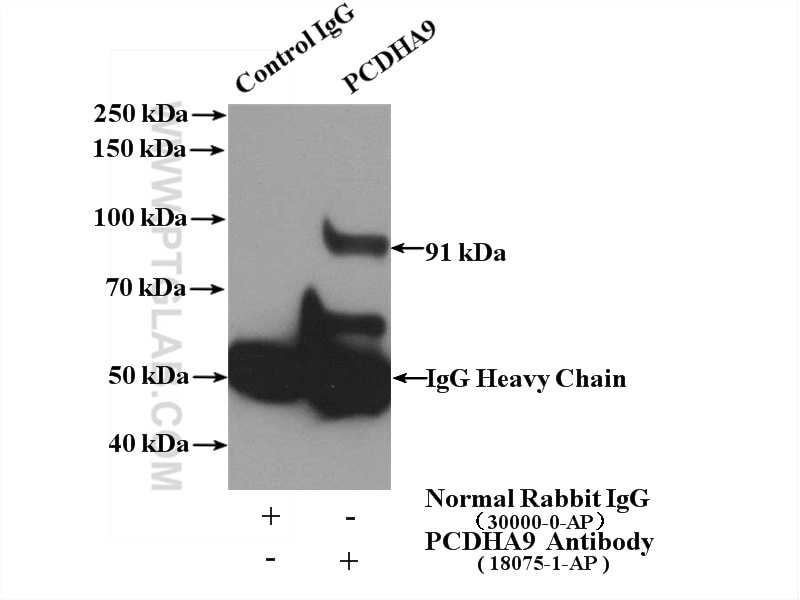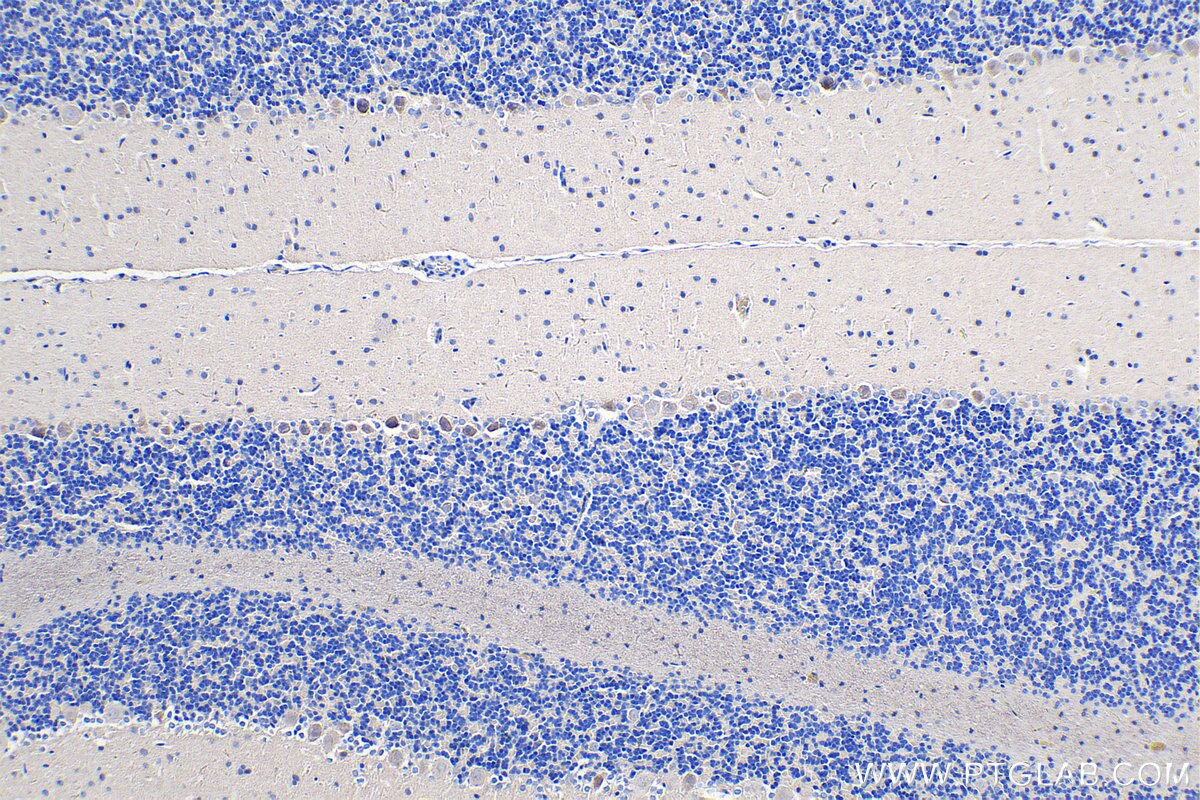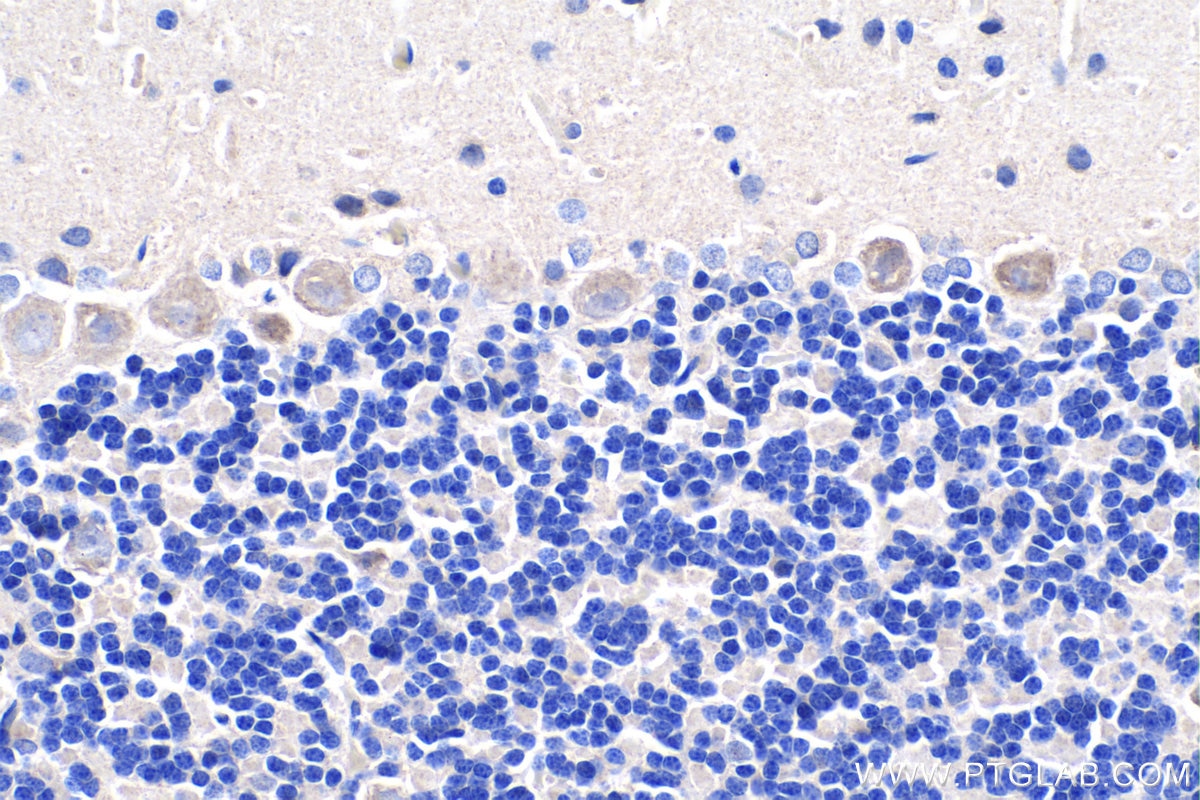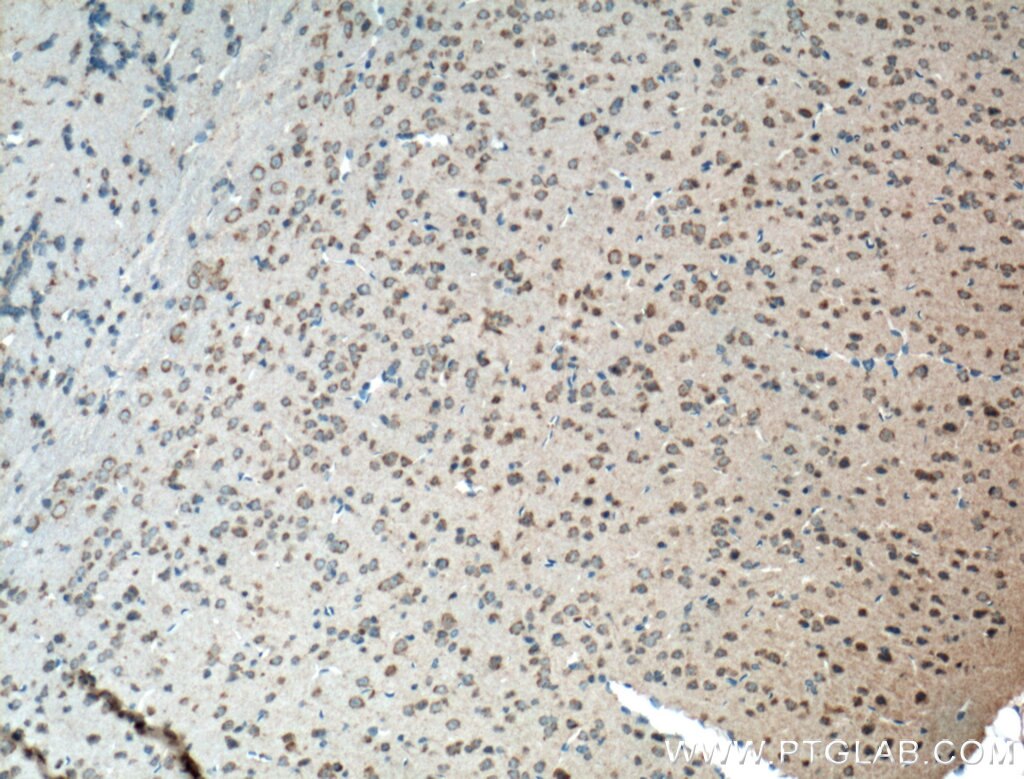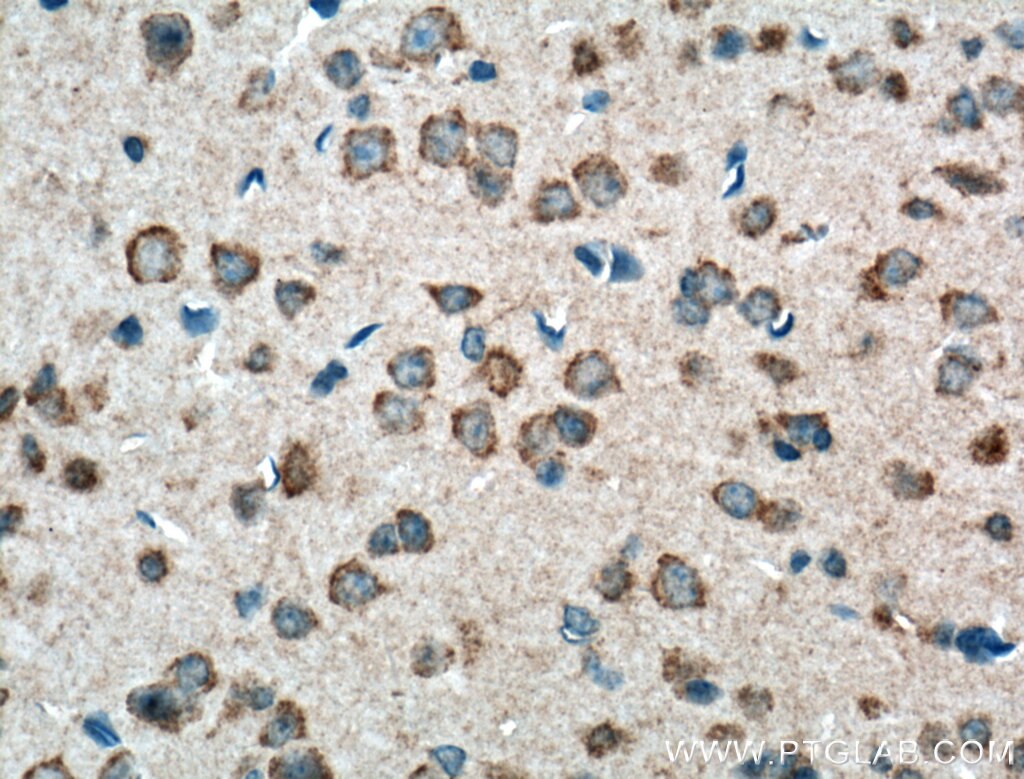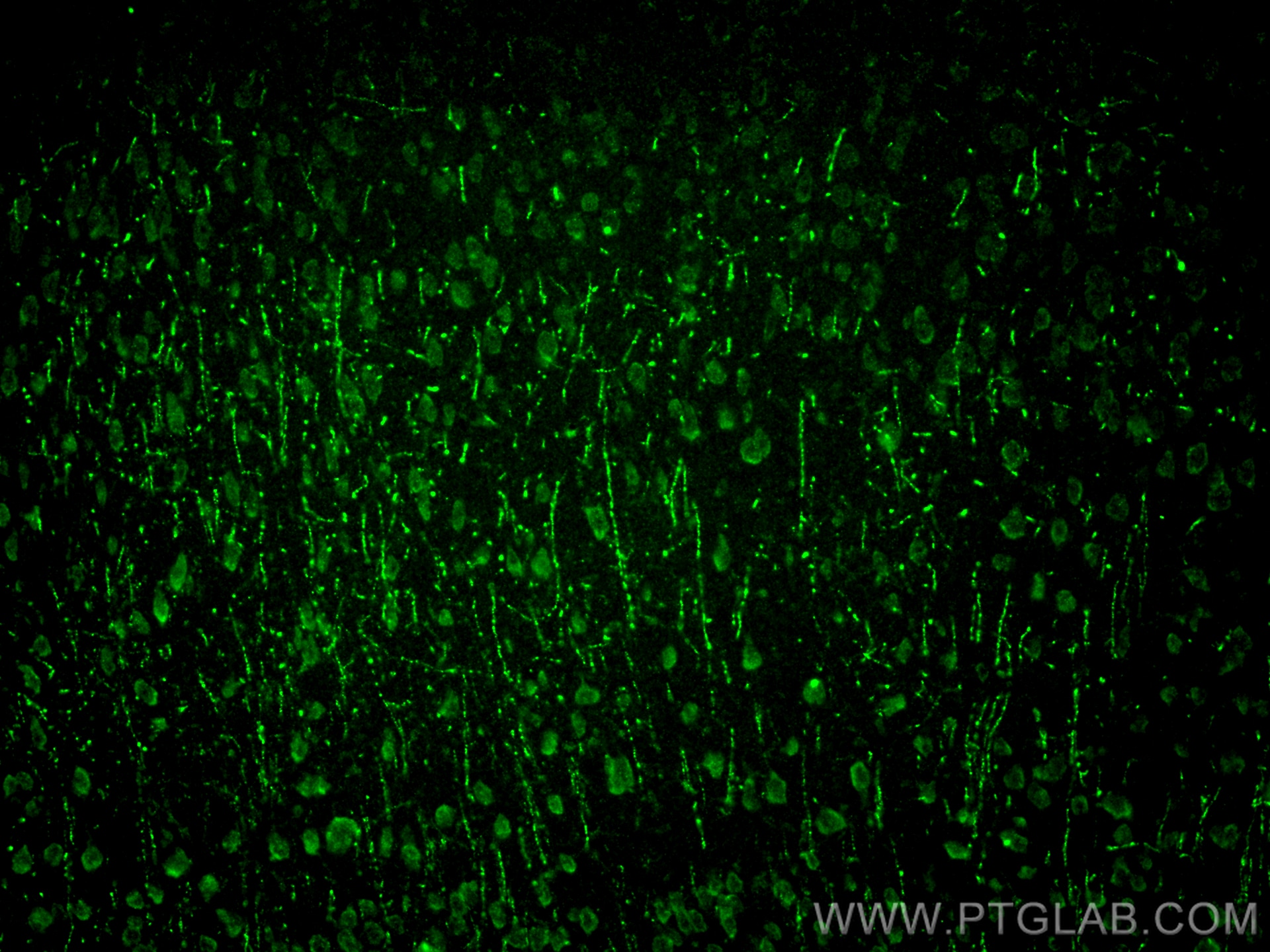- Featured Product
- KD/KO Validated
PCDHA9 Polyklonaler Antikörper
PCDHA9 Polyklonal Antikörper für IHC, IF-P, IP, ELISA
Wirt / Isotyp
Kaninchen / IgG
Getestete Reaktivität
human, Maus, Ratte
Anwendung
WB, IHC, IF-P, IP, ELISA
Konjugation
Unkonjugiert
Kat-Nr. : 18075-1-AP
Synonyme
Geprüfte Anwendungen
| Erfolgreiche IP | Maushirngewebe |
| Erfolgreiche Detektion in IHC | Maushirngewebe, Ratten-Cerebellum-Gewebe Hinweis: Antigendemaskierung mit TE-Puffer pH 9,0 empfohlen. (*) Wahlweise kann die Antigendemaskierung auch mit Citratpuffer pH 6,0 erfolgen. |
| Erfolgreiche Detektion in IF-P | Maushirngewebe |
Empfohlene Verdünnung
| Anwendung | Verdünnung |
|---|---|
| Immunpräzipitation (IP) | IP : 0.5-4.0 ug for 1.0-3.0 mg of total protein lysate |
| Immunhistochemie (IHC) | IHC : 1:50-1:500 |
| Immunfluoreszenz (IF)-P | IF-P : 1:50-1:500 |
| It is recommended that this reagent should be titrated in each testing system to obtain optimal results. | |
| Sample-dependent, check data in validation data gallery | |
Veröffentlichte Anwendungen
| KD/KO | See 1 publications below |
| WB | See 2 publications below |
| IF | See 1 publications below |
Produktinformation
18075-1-AP bindet in WB, IHC, IF-P, IP, ELISA PCDHA9 und zeigt Reaktivität mit human, Maus, Ratten
| Getestete Reaktivität | human, Maus, Ratte |
| In Publikationen genannte Reaktivität | human, Maus |
| Wirt / Isotyp | Kaninchen / IgG |
| Klonalität | Polyklonal |
| Typ | Antikörper |
| Immunogen | PCDHA9 fusion protein Ag12767 |
| Vollständiger Name | protocadherin alpha 9 |
| Berechnetes Molekulargewicht | 950 aa, 102 kDa |
| Beobachtetes Molekulargewicht | 91 kDa |
| GenBank-Zugangsnummer | BC104802 |
| Gene symbol | PCDHA9 |
| Gene ID (NCBI) | 9752 |
| Konjugation | Unkonjugiert |
| Form | Liquid |
| Reinigungsmethode | Antigen-Affinitätsreinigung |
| Lagerungspuffer | PBS with 0.02% sodium azide and 50% glycerol |
| Lagerungsbedingungen | Bei -20°C lagern. Nach dem Versand ein Jahr lang stabil Aliquotieren ist bei -20oC Lagerung nicht notwendig. 20ul Größen enthalten 0,1% BSA. |
Hintergrundinformationen
Protocadherins, which constitute the largest subgroup within the cadherin superfamily, are predominantly expressed in the nervous system and are probably involved in the regulation of neuronal recognition and connectivity (PMID: 17936607; 12231349; 17133224). The protocadherin subfamily can be further subdivided into three groups: the clustered protocadherins, comprising α-, β- and γ-protocadherins; δ-protocadherins; and others, many of which are solitary (PMID: 17133224). PCDHA9 belongs to the α-protocadherin (PCDHA) cluster. A homozygous variant in PCDHA9 has been found in three unrelated Chinese ALS patients, suggesting PCDHA9 as a candidate gene for amyotrophic lateral sclerosis(PMID: 38467605).
Protokolle
| PRODUKTSPEZIFISCHE PROTOKOLLE | |
|---|---|
| IHC protocol for PCDHA9 antibody 18075-1-AP | Protokoll herunterladenl |
| IF protocol for PCDHA9 antibody 18075-1-AP | Protokoll herunterladen |
| IP protocol for PCDHA9 antibody 18075-1-AP | Protokoll herunterladen |
| STANDARD-PROTOKOLLE | |
|---|---|
| Klicken Sie hier, um unsere Standardprotokolle anzuzeigen |
